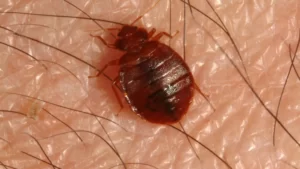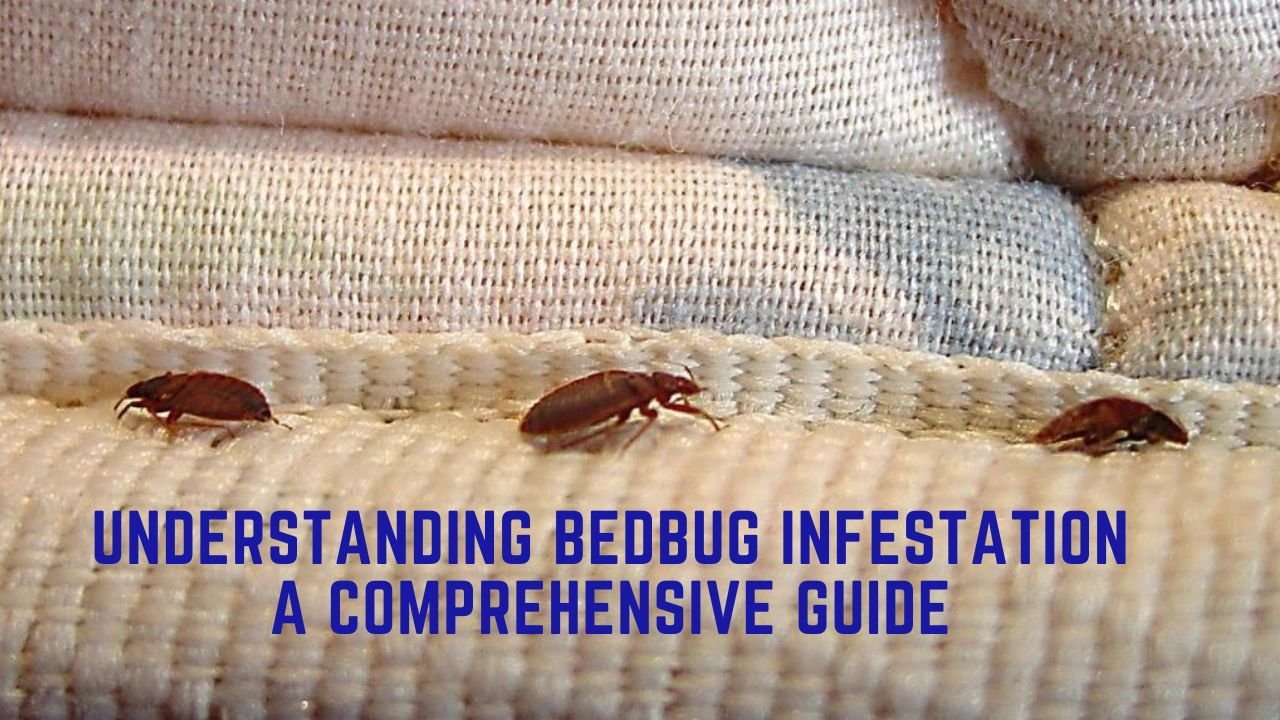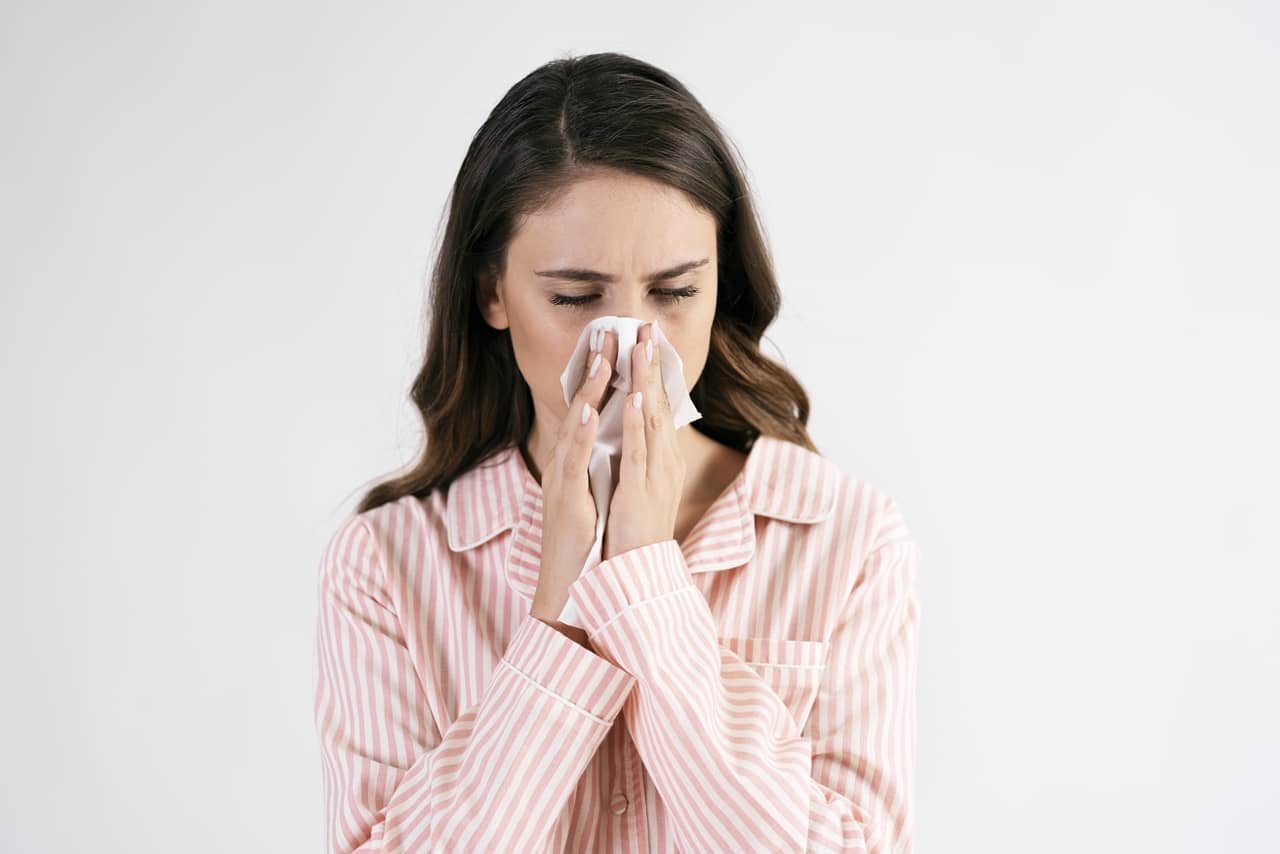Introduction: Decoding the Bedbug Menace
In recent years, bedbug infestations have become an increasing concern for homeowners. These tiny, elusive creatures have a knack for infiltrating our living spaces, causing discomfort and stress. In this comprehensive guide, we delve deep into the world of bedbugs, exploring their habits, identifying signs of infestation, and most importantly, offering effective solutions to eradicate them.
What Are Bedbugs?
Bedbugs are small insects that feed on the blood of humans and animals. They are reddish-brown, flat, and oval-shaped, about the size of an apple seed. Bedbugs are active at night and hide during the day in cracks and crevices. They can be found in homes, hotels, and other places where people sleep. Bedbugs can hitch a ride on clothing, luggage, and furniture, spreading from one place to another. Their bites can cause itchy red bumps on the skin. Infestations can be challenging to control, requiring professional help to get rid of them completely.

What Are The Causes of Bed Bugs?
- Travel: Traveling is one of the most common ways bedbugs spread. They can latch onto luggage, clothing, or other personal belongings, and when these items are brought into a new environment, the bedbugs come with them.
- Secondhand Furniture: Used furniture, especially mattresses and couches, can harbor bedbugs. If you bring in furniture that has been infested, you’re inviting bedbugs into your home.
- Crowded Living Conditions: Bedbugs thrive in places where there are many people in close proximity. This can include hotels, dormitories, apartments, and shelters. If one person brings bedbugs into such a space, they can quickly spread to others.
- Visitors: Guests who unknowingly carry bedbugs can introduce them into your home. Bedbugs can easily transfer from bags or clothing onto furniture, bedding, or carpets.
- Clothing: Bedbugs can also be present in clothing, especially if it has been in an infested area. Thrift stores and communal laundry facilities are common places where bedbugs can be picked up.
- Adjacent Infestations: If your neighbors have bedbugs, there’s a chance that they can migrate from their place to yours through cracks in walls or electrical outlets.
- Lack of Awareness: Sometimes, people might not be aware that they have bedbugs. These pests are excellent at hiding, and their bites can be mistaken for other insect bites, leading to delayed detection and treatment.
Understanding these causes can help you take preventive measures, such as being cautious when traveling, thoroughly inspecting secondhand furniture before bringing it home, and regularly checking your living space for signs of infestation.
Is Bed Bugs Harmful to Humans?
In summary, while bedbugs do not pose a direct physical health risk in terms of disease transmission, their presence can have serious implications for a person’s mental and emotional health, as well as their overall quality of life.
What Are The Signs of Bedbug Infestation?
- Bite Marks: One of the most common signs of bedbugs is waking up with itchy, red bites. These bites often appear in a line or cluster on areas of the body that are exposed during sleep, such as the face, neck, arms, and hands.

- Blood Stains: Bedbugs can get crushed while feeding, leaving behind small bloodstains on your sheets, pillowcases, or mattress cover. These stains might be dark red or rust-colored.

- Dark Spots: Bedbugs excrete digested blood after feeding, leaving behind small, dark spots or smears on sheets, mattresses, or walls near their hiding spots.
- Musty Odor: Infestations can produce a sweet, musty odor. If you notice an unusual smell in your bedroom or other areas of your home, it could be a sign of bedbugs.
- Exoskeletons: Bedbugs shed their exoskeletons as they grow. These empty exoskeletons are light brown and can be found in areas where bedbugs hide, such as mattress seams and crevices.
- Live Bugs: In some cases, you might actually see live bedbugs. They are small, reddish-brown insects with a flat, oval shape. Adult bedbugs are about the size of an apple seed, while nymphs (young bedbugs) are smaller and lighter in color.

- Tiny Eggs: Bedbug eggs are tiny, white, and difficult to see without magnification. They are usually found in cracks, crevices, and other hidden locations near a bed or sleeping area.
If you notice any of these signs, it’s important to take immediate action to prevent the infestation from worsening. Consult a pest control professional for a thorough inspection and appropriate treatment to eradicate the bedbugs from your home.
How to Find The Bed Bugs On Bed?
- Strip the Bed: Remove all bedding, including sheets, pillowcases, and mattress covers. Place them directly into a garbage bag and seal it to prevent any potential bedbugs from escaping.
- Check the Mattress: Carefully inspect the seams, folds, and tufts of the mattress. Use a flashlight to illuminate the area, as bedbugs are tiny and can hide in very small crevices. Look for live bugs, exoskeletons, or tiny white eggs.
- Inspect the Box Spring: Bedbugs often hide in the box spring. Examine the fabric, seams, and any staples or nails. Bedbugs might also hide in the corners or inside the box spring if there are any openings.
- Look at the Bed Frame: Check the joints, cracks, and screw holes of the bed frame. Bedbugs can hide in these areas. Also, inspect any nearby furniture or objects close to the bed.
- Examine Other Furniture: If your bed is near other furniture like nightstands or dressers, inspect these as well. Bedbugs can easily travel between different pieces of furniture.
- Use a Credit Card or Thin Cardboard: Bedbugs can hide in very thin crevices. Run the edge of a credit card or thin piece of cardboard along seams, joints, and other potential hiding spots. If bedbugs are present, they might be dislodged and visible on the card.
- Look for Signs: Besides the bugs themselves, look for signs like reddish-brown stains (bedbug excrement), tiny white eggs, or molted exoskeletons. These indicate an active bedbug infestation.
- Consider Using Interceptor Traps: These are devices placed under the legs of the bed that trap bedbugs attempting to climb onto the bed. If you find bedbugs in these traps, it confirms their presence.
Remember, bedbugs are excellent at hiding, so a lack of visible bedbugs does not guarantee an absence of an infestation. If you suspect an infestation but can’t find the bugs, consider consulting a professional pest control expert for a more thorough inspection.
How Do I Get Rid of Bed Bug On My Bed?

- Wash Bedding and Clothing: Remove all bedding, curtains, and clothing from the infested room and wash them in hot water. Use the highest heat setting to ensure that bedbugs and their eggs are killed. Dry the items on high heat as well.
- Vacuum Thoroughly: Vacuum the mattress, box spring, bed frame, and surrounding areas. Use a vacuum cleaner with a brush attachment to dislodge bedbugs and their eggs from cracks and crevices. Dispose of the vacuum bag in a sealed plastic bag immediately after vacuuming.
- Use a Steamer: Bedbugs are sensitive to heat. Use a steam cleaner to treat the mattress, box spring, and other infested areas. The high temperature of the steam will kill bedbugs and their eggs on contact.
- Use Diatomaceous Earth: Diatomaceous earth is a fine powder that can be sprinkled around the bed and other infested areas. It is safe for humans but deadly for bedbugs. The powder damages the bedbugs’ exoskeleton, leading to dehydration and death.
- Seal Cracks and Crevices: Use caulk to seal cracks and crevices in walls, furniture, and electrical outlets. Bedbugs often hide in these spaces, so sealing them off reduces their hiding spots.
- Use Bedbug Encasements: Encase your mattress and box spring in special bedbug-proof encasements. These encasements trap any remaining bedbugs inside and prevent new infestations.
- Consider Professional Pest Control: If your infestation is severe or if your efforts do not seem to be working, consider hiring a professional pest control service. They have access to stronger insecticides and can apply them safely and effectively.
- Be Persistent: Bedbug eradication may require multiple treatments. Even if you don’t see bedbugs after your initial efforts, continue to be vigilant. Bedbug eggs are notoriously resilient and may hatch later, requiring additional treatment.
Remember, getting rid of bedbugs takes time and persistence. It’s essential to be thorough and consistent in your efforts to completely eliminate these pests from your bed and home.
What Are The Best Treatment For Bed Bugs?
- Professional Pest Control: Hiring a reputable pest control service is often the most reliable way to eliminate bedbugs. Professionals have access to insecticides that are not available to the public, and they have the expertise to apply them safely and effectively.
- Heat Treatment: Bedbugs cannot survive extreme heat. Professional heat treatment involves raising the temperature in the infested area to a level that kills bedbugs and their eggs. This method is chemical-free and can penetrate areas that are difficult to reach with insecticides.
- Insecticides: There are various insecticides available for bedbug treatment. Some are designed for direct application on bedbugs, while others are meant for use on surfaces where bedbugs are likely to travel. It’s crucial to follow the instructions carefully and consider consulting a professional for proper application.
- Diatomaceous Earth: Diatomaceous earth is a natural powder that damages the bedbugs’ exoskeleton, leading to dehydration and death. It’s safe for humans and pets but lethal to bedbugs. Sprinkle diatomaceous earth in areas where bedbugs are likely to hide.
- Cold Treatment: Just as heat is effective, extreme cold can also kill bedbugs. Items that can be laundered can be placed in the freezer for several days to kill bedbugs and their eggs.
- Encasements: Use bedbug-proof encasements on mattresses and box springs. These encasements trap any remaining bedbugs inside and prevent new infestations. Make sure the encasements are of high quality and specifically designed to keep bedbugs out.
- Vacuuming: Regular and thorough vacuuming can help remove bedbugs and their eggs from surfaces. Use a vacuum cleaner with a brush attachment and dispose of the vacuum bag in a sealed plastic bag immediately after use.
- Professional Steam Cleaning: Steam cleaners can be used to treat infested areas. The high temperature of the steam kills bedbugs on contact. However, it may not penetrate deep into materials, so it’s best used in conjunction with other methods.
Remember, bedbug treatment is often best left to professionals due to the resilience and stealthy nature of these pests. Professional pest control services can assess the extent of the infestation and tailor the treatment methods accordingly for the most effective results.
What Kills Bed Bugs Permanently Naturally?
- Diatomaceous Earth (DE): DE is a fine powder that consists of the fossilized remains of aquatic organisms. It damages the bedbugs’ exoskeleton, causing them to dehydrate and die. Sprinkle a thin layer of food-grade diatomaceous earth around bed frames, cracks, and crevices where bedbugs might hide.
- Tea Tree Oil: Tea tree oil has insecticidal properties. Mix a few drops of tea tree oil with water and spray it on infested areas. However, be cautious as tea tree oil is potent; always dilute it before use.
- Lavender Oil: Bedbugs dislike the smell of lavender. Mix lavender oil with water and spray it on your bedding and in areas where bedbugs might hide. This won’t kill them but might deter them.
- Lemongrass Spray: Lemongrass has natural pesticidal properties. Boil lemongrass in water, strain the liquid, and spray it around your home, particularly on bedding and furniture.
- Peppermint Oil: Peppermint oil is a natural insect repellent. Mix a few drops of peppermint oil with water and spray it on infested areas. It can deter bedbugs and make your home smell fresh.
- Baking Soda: While baking soda doesn’t directly kill bedbugs, it can help by absorbing moisture and dehydrating these pests. Sprinkle baking soda on infested areas, leave it for a few days, then vacuum it up.
- Silica Gel: Silica gel is a desiccant that absorbs moisture and dehydrates bedbugs. Place sachets of silica gel near infested areas, but ensure they are out of reach of children and pets.
- Cayenne Pepper: Sprinkle cayenne pepper around cracks and crevices. Bedbugs are believed to be repelled by its strong smell.
- Essential Oil Sprays: Various essential oils like citronella, eucalyptus, and neem oil have insect-repellent properties. Mix them with water and spray around your home. While they may not kill bedbugs, they might deter them.
It’s important to note that these natural remedies might not be as effective as professional treatments. Severe infestations usually require the expertise of pest control professionals who can assess the situation and use appropriate methods and chemicals to eliminate bedbugs permanently.
Top 10 Pest Controll Bed Bugs Company In The USA
Few well-known pest control companies in the USA that are often recognized for their services. It’s advisable to research and read recent customer reviews to find the best bed bug extermination service in your specific area. Here are a few reputable pest control companies in the USA:
- Orkin: Orkin is one of the largest and most well-known pest control companies in the USA, providing services nationwide.
- Terminix: Terminix is another major pest control company that offers services across the country. They specialize in various pest issues, including bed bugs.
- Arrow Exterminators: Arrow Exterminators is a family-owned pest control company serving several states in the Southeastern United States.
- Rentokil Steritech: Rentokil Steritech is a global pest control company with a strong presence in the USA, offering commercial and residential pest control services.
- Ecolab Pest Control: Ecolab provides pest elimination services to businesses in various industries, including hospitality, healthcare, and food service.
- Western Exterminator: Western Exterminator operates in several states and offers a wide range of pest control services, including bed bug eradication.
- Truly Nolen: Truly Nolen is a pest control company known for its distinctive yellow mouse cars. They provide services in many states across the USA.
- Presto-X: Presto-X is a pest control company offering services in several states, known for its comprehensive pest control solutions.
- Clark Pest Control: Clark Pest Control operates in California and Nevada, providing residential and commercial pest management services.
- Dodson Pest Control: Dodson Pest Control serves multiple states in the Southeastern USA, offering various pest control services.
Remember, the effectiveness of a pest control company can depend on various factors, including the severity of the infestation and the specific methods they employ. It’s essential to research and choose a company with a good reputation, experienced technicians, and effective treatment options. Reading recent customer reviews and getting referrals from neighbors or friends can also help you make an informed decision.
Top 10 Pest Controll Bed Bugs Company In India
There are a lots of pest controll companies in India that are often recognized for their services. Please note that the popularity and effectiveness of these companies can vary by region and change over time. It’s advisable to research and read recent customer reviews to find the best bed bug extermination service in your specific area. Here are a few reputable pest control companies in India:
- Pest Control India: Pest Control India is one of the oldest and largest pest control companies in India, offering a wide range of pest management services.
- Godrej Pest Control: Godrej Pest Control is a well-known pest control service provider in India, offering services for both residential and commercial properties.
- Rentokil PCI: Rentokil PCI is a global pest control company with a strong presence in India. They provide services for various pest issues, including bed bugs.
- Lal Hits: Lal Hits is a popular pest control brand in India, known for its effective pest management solutions.
- HiCare: HiCare is a widely recognized pest control service in India, offering services for homes, offices, and industries.
- Pest Control Wizards: Pest Control Wizards is a professional pest control company known for its expertise in handling bed bug infestations.
- Pesto India: Pesto India offers comprehensive pest control services, including bed bug extermination, for residential and commercial properties.
- Pestoman: Pestoman is a pest control service provider operating in various cities across India, offering customized solutions for different pest problems.
- UrbanClap (Now Urban Company): Urban Company is a popular online platform in India that connects customers with verified pest control professionals. They offer services for various pest issues, including bed bugs.
- SIPCOT Pest Control: SIPCOT Pest Control is a trusted pest control company in Chennai, Tamil Nadu, offering reliable services to residential and commercial clients.
When choosing a pest control company, it’s essential to consider factors such as their reputation, experience, methods used, and customer reviews. Conduct thorough research and, if possible, get recommendations from people in your local area for the most reliable and effective bed bug extermination service.
















